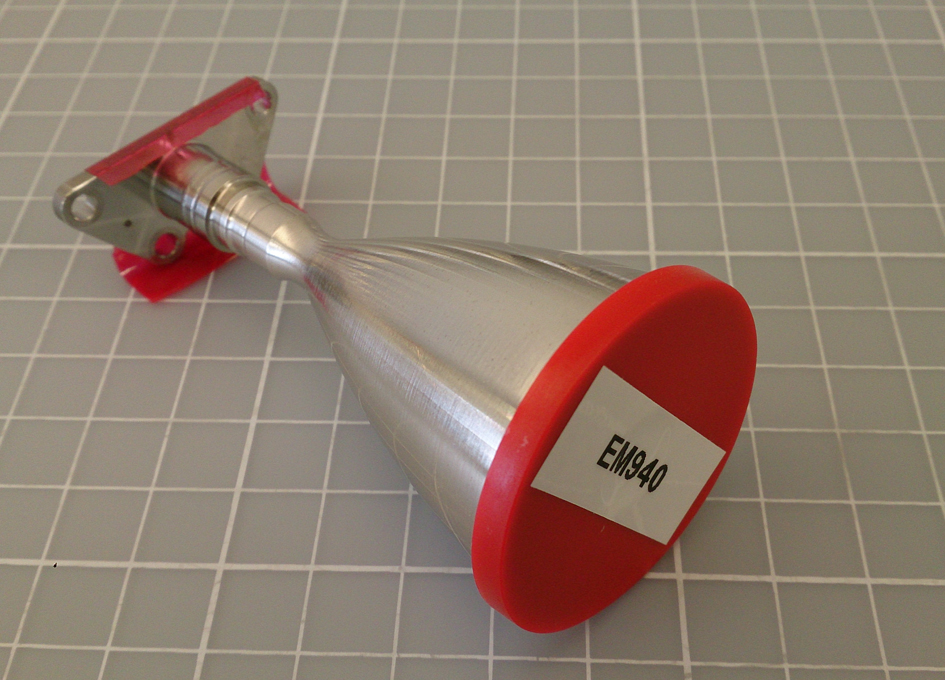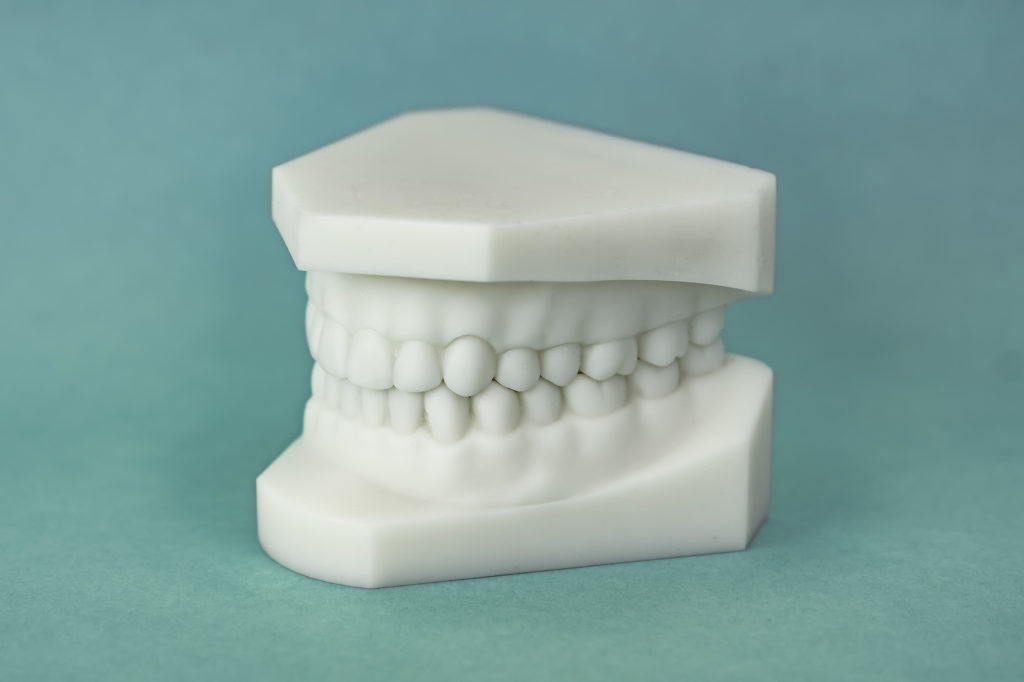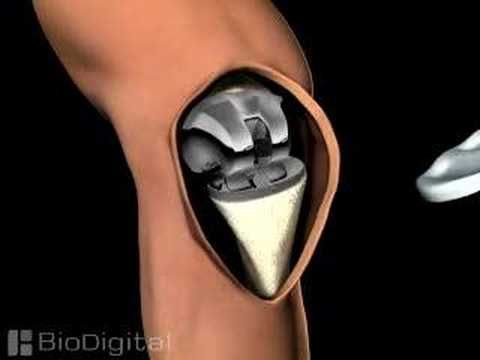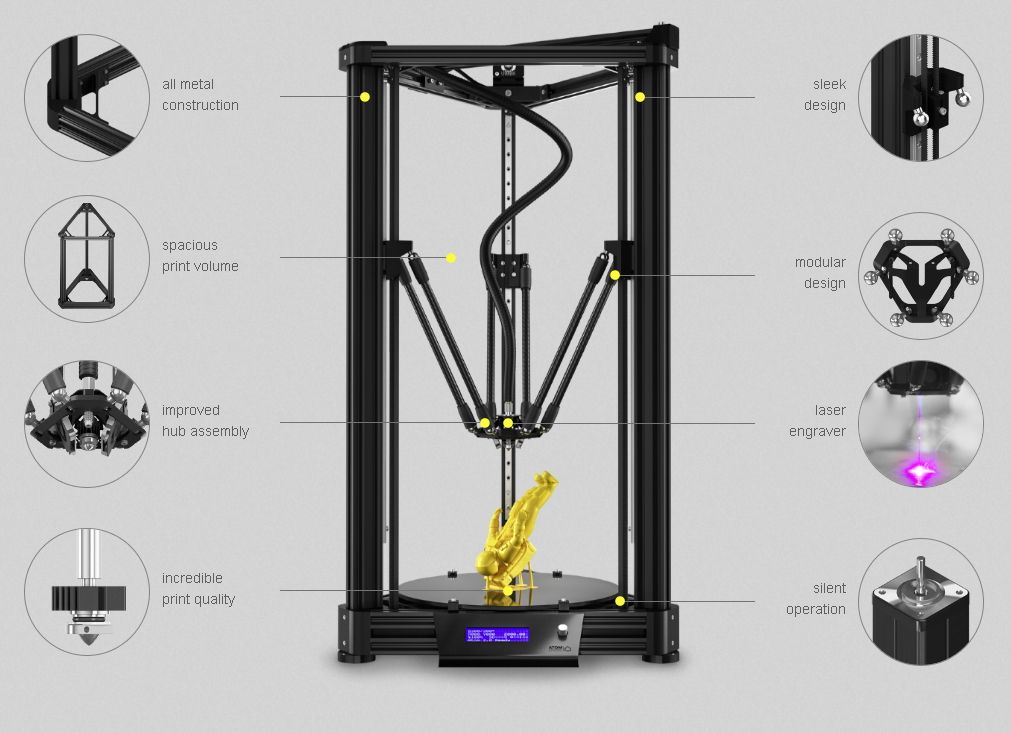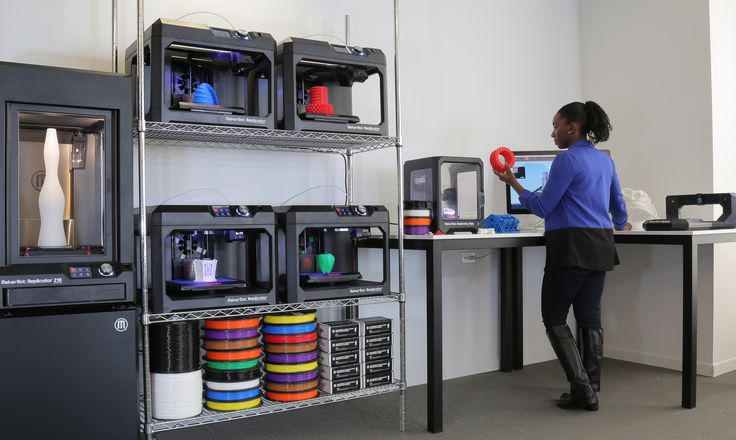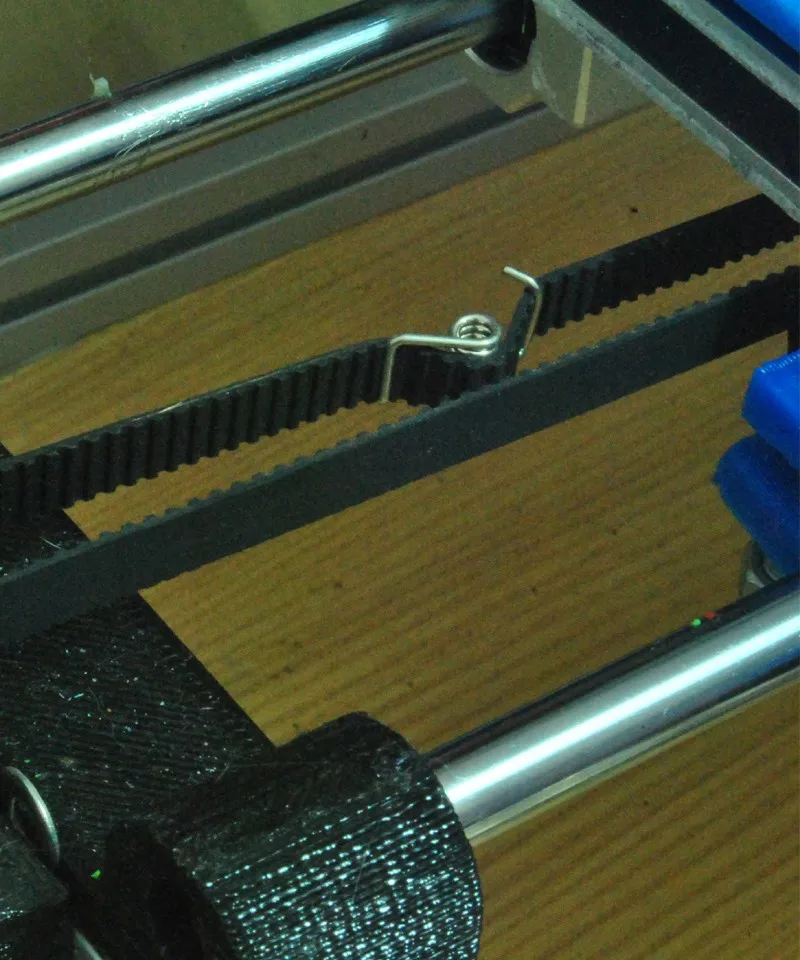Slicer 3d printer software
Open source 3D printing toolbox
What is Slic3r?
Features
Compatible with your printer too. RepRap (Prusa Mendel, MendelMax, Huxley, Tantillus...), Ultimaker, Makerbot, Lulzbot AO-100, TAZ, MakerGear M2, Rostock, Mach4, Bukobot and lots more. And even DLP printers.
Fast G-code generation is fast. Don't wait hours for slicing that detailed model. Slic3r is about 100x faster than Skeinforge. It also uses multithreading for parallel computation.
Lots of input/output formats. Slic3r reads STL, AMF and OBJ files while it can output G-code and SVG files.
Do you like the graphical interface or command line? All the features of the user-friendly interface are also available from command line. This allows to integrate Slic3r in your custom toolchain and batch operations as you like.
Open source, open development. Slic3r is open source software, licenced under the AGPLv3 license. The development is centered on GitHub and the #slic3r IRC channel on FreeNode, where the community is highly involved in testing and providing ideas and feedback.
Dependencies? Nah. Slic3r is super-easy to run: download, double click and enjoy. No dependencies needed. Hassle-free. For MacOS X, Windows, Linux.
Print with dual multiple extruders. Print beautiful colored objects, or use your secondary extruder to build support material. Or put a larger nozzle on it and print a faster infill.
Use brim for the best adhesion. This unique feature improves built plate adhesion by generating a base flange around your objects that you can easily remove after printing.
Microlayering: save time, increase accuracy. You can choose to print a thicker infill to benefit from low layer heights on perimeters and still keep your print time within a reasonable amount.
Compose a plate but print one object at time. Use the built-in plating interface that allows to place objects with drag-and-drop, rotate and scale them, arrange everything as you like. The sequential printing feature allows to print one complete object at time in a single print job.
Use the built-in plating interface that allows to place objects with drag-and-drop, rotate and scale them, arrange everything as you like. The sequential printing feature allows to print one complete object at time in a single print job.
Cool cooling strategies. A very smart cooling logic will regulate your fan speed and print speed to ensure each layer has enough time to cool down before next one is laid on it.
Manage multiple printers, filaments and build styles. The configuration handling system was designed for people working with multiple machines and filaments: you can save configurations as presets for each category avoiding to multiply your saved configurations.
Enjoy support material. Automatic generation of support material for overhangs.
Gallery
Links
The RepRap Project
Slic3r - 1.
 3.0
3.0A new version, finally! Despite the long time since the last versioned release, work on Slic3r has never stopped. Daily automated builds are available on this website, so this release is not entirely new for all people who have been following development.
This release was curated by Joseph Lenox (Lordofhyphens).
Please join the discussion on GitHub and report issues and ideas.
New features:
- Controller: print via USB directly from Slic3r! Spool your prints in a queue and print to multiple printers at the same time.
- 3MF format read/write (#4046)
- Experimental support for SLA/DLP machines (USB/video output)
- Bonjour detection of Octoprint instances
- Custom G-code now can have some logic and math, see the manual (#3390)
- Solarized color scheme now available. (#4322)
- Support for long retracts (Marlin/Repetier)
- New infill patterns: gyroid, cubic, stars Infill pattern (#3666)
- Adaptive Slicing (let Slic3r vary the layer thickness according to the slopes in the model) (#1386)
- You can now nudge/move models with the keyboard arrows in the 2D plater.
 (#4102)
(#4102) - Generic modifier meshes – the powerful and well-known modifier meshes, already available in Slic3r, can be now created and positioned directly from the visual interface of Slic3r without the need for an external CAD program! (#3590)
- Option to force M190/M109 for extruder and bed heater
- You can turn off automatic centering and alignment in Z.
- Optimistic time estimation for prints. (#3747)
- Slic3r will now tell you cost of material used after exporting Gcode (°3669)
- Linux AppImage and tarball builds.
- Undo/Redo for rotate, mirror, split, cut (#3265)
- Custom G-code can now be entered for between objects in sequential object mode.
- Reprapfirmware/Duet print server support (#4028)
- Custom G-code can be set for filament profiles. Its start G-code is placed after printer start G-code and its end G-code is placed before printer end G-code.
 3/s is now output in gcode.
3/s is now output in gcode. - “Move to bed center” option in object menu.
- Experimental option z_steps_per_mm to have slic3r auto-align layer height to integer Z steps. (#1827)
- Top and bottom fill pattern can now be specified separately.
- Brim can now be specified for inside holes.
- Seams can now be specified in “rear” position.
- Detect thin walls can produce variable-thickness perimeters now in some situations.
- Brim connections
- Bed temperature can now be specified at 0.
- New option to tell Slic3r if your printer has a heatbed (and whether or not to bother putting bed heat gcode in).
- Smoothieware G-code flavor (primarily affects retraction) (#3373)
- You can now specify some overrides for Printer settings from Filament. (#3770)
- The pattern angle for rafts is now configurable.
- Doxygen-generated documentation for libslic3r.
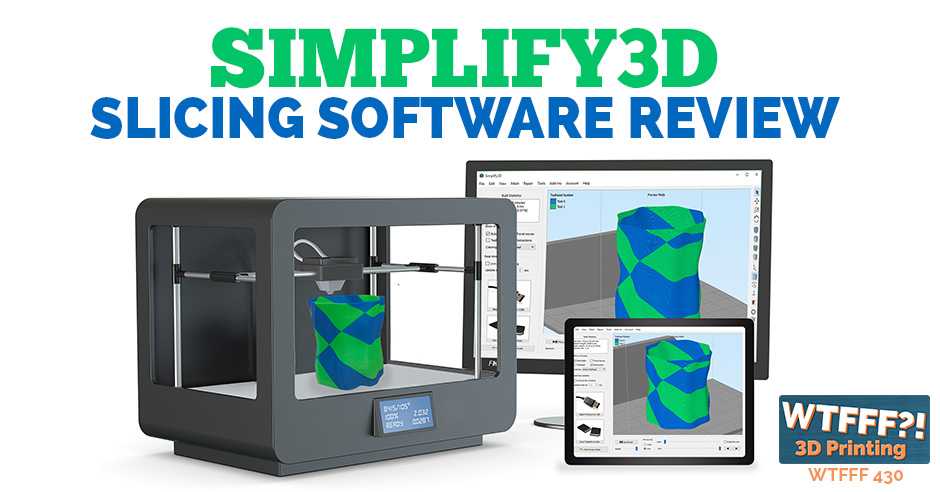
- Print and filament profiles can be marked as compatible with specific printer profiles. (#3770)
Improvements
- New build/packaging system for Windows
- New build/packaging system for OSX
- Configuration options shortcuts are available in the main plater (#3912)
- More code was ported to C++, including infill, bridge detection, cooling, GCodeReader and SpiralVase
- Antialiasing for the plater. (#3343)
- Switching to the 3D Preview now starts a slice if background processing is off.
- Gap fill is much, much smarter now.
- Rectilinear fill has been improved.
- External perimeters are not slowed down even more if possible.
- Lots of things are done in parallel in libslic3r.
- Speed improvements in some cases.
- If auto-arrange fails, ignore bed shape.
- Speed settings now default to “auto” instead of “0” (same behavior, but more clear)
- small_perimeter_speed is now ignored for overhangs.

- Slic3r warns you when objects are outside of the print bed area.
- UI: You can zoom without the mousewheel now. (#3233)
- MotionPlanner should be much smarter now.
- Mac Retina displays are now supported. (#2888)
- Numerous C++11 related code cleanup.
- Bridge detection is improved
Changes
- Simple/Expert Mode is no more, we are all experts now.
Bugfix
- External perimeters are now chosen to be 1.1*(nozzle width) when using auto.
- 3D Honeycomb Infill switches
- Brims are now nudged slightly closer to models.
- DLP SVG export works now. (#4311)
- Setting acceleration for reprapfirmware works now.
- STL imports in big-endian architectures works now. (#4143)
- Several crash bugs have been fixed, especially around custom gcode handling.
- Bridging should be improved when there are narrow gaps under bridge anchors.
- Scaling objects with multiple copies in the plater should now be consistent.

- Fixes to background processing.
- flowrate.pl now handles negative coordinates.
- Windows build shouldn’t hang forever on a C++ Exception
- Fewer copies are made when multi-object AMF files are converted to a multi-part onject
- solid_infill_below_area is ignored when fill_density is 100%
- Title labels for the layer height editor aren’t cut off.
- Correct extruder order should be used now if more than 10 extruders are used. (#3235)
- If there is a raft, print brims using the support material extruder.
- Auto width now does not assume your hotend can produce infinitely wide traces.
- Mousewheel zoom is now consistent.
- Diagonal gaps (due to slopes) should now properly place extra perimeters.
- Trimmed down the axis lengths on the plater.
- Temperature standby works now on Makerbot/Sailfish firmware
- Nonexistant config options should not cause Slic3r to crash (instead it just ignores them)
- Variable-width perimeters can’t cause negative extrusion.

- Combined infill (infill-every-n-layers) now correctly draws thicker infill than perimeters.
Selection of Popular 3D Printing Slicers
Home » Articles » 3D Slicing Software » Selection of Popular 3D Printing Slicers
#1: Cura
Download - Cura 15.04.6 or Cura-3.2.1-win64
3D printing requires preliminary preparation of STL files for future models. Cura is designed for this purpose - a universal slicer designed for Ultimaker 3D printers and fully compatible with RepRap, Makerbot, Printrbot, Lulzbot and Witbox additive installations. A distinctive feature of this software is the open source code, which allows the user, if necessary, to expand the capabilities of the program by installing additional applications. With its help, you can directly control the 3D printer, provided it is connected to a PC, quickly adjusting the model growth. nine0003
Cura Standard Slicer is easy and simple to use, even an amateur can figure out its settings, all thanks to an intuitive interface and easy navigation.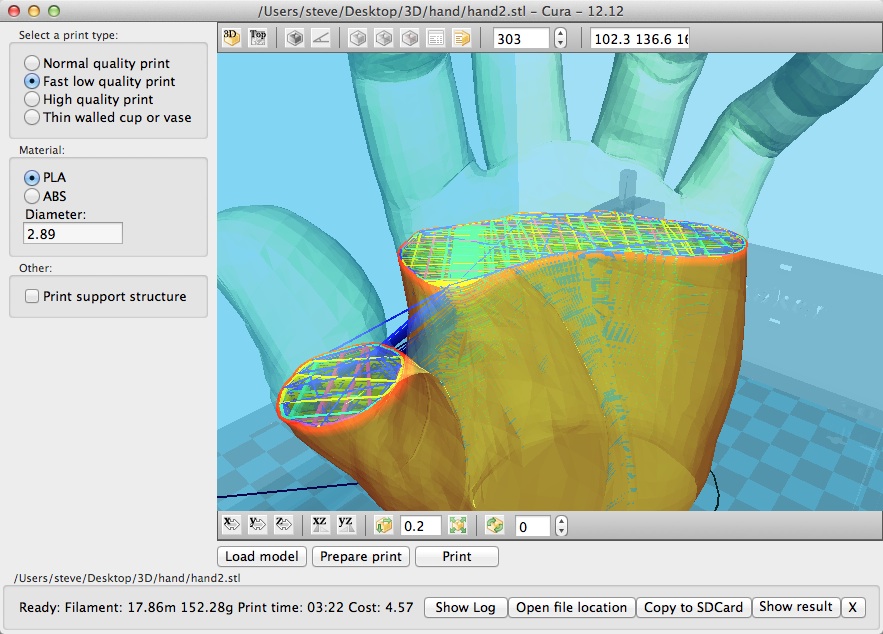 It is recommended to start work in the Basic mode, where you can quickly change the print settings, choosing the best option for the future 3D model. To improve the quality of the grown product, the Expert mode is provided.
It is recommended to start work in the Basic mode, where you can quickly change the print settings, choosing the best option for the future 3D model. To improve the quality of the grown product, the Expert mode is provided.
#2: CraftWare
The CraftWare computer program is intended for those who are just learning the basics of modern 3D printing. It belongs to the category of slot-slicers designed to prepare STL files for printing in order to select the optimal settings for growing a high-quality 3D model. nine0003
The developer of this program is the Hungarian startup CraftUnique, which created a soft slicer to support its own CraftBot device, providing for its compatibility with other printers.
The undeniable advantages of using CraftWare to prepare STL files for 3D printing include the ability to quickly switch from the lightweight Basic mode to the professional Expert mode in order to control the quality of the grown product, visual G-code visualization, which provides easy control of actions, and individual support service, which until recently only paid programs had. nine0003
nine0003
If you decide to use CraftWare to prepare STL files for 3D printing, please note that as of today, you can only download the beta version from the Internet, where errors and failures are possible.
#3: Netfabb Basic
This software is designed to prepare STL-files for printing with the possibility of their analysis, editing, "repair", up to switching to cutting. The ability to correct ready-made STL files at the stage of their preparation for 3D printing is its strength. This computer program is used even by advanced users in the field of three-dimensional modeling. It fundamentally differs from software-slicers in its advanced functionality. Netfabb Basic is a truly powerful tool used by amateurs and professionals alike. It belongs to the category of basic programs only because of the low cost. nine0003
No. 4: Repetier
This computer program is intended for advanced users. It stands a level above the standard beginner-friendly slicer software that prepares STL files for printing, but it is open source, allowing you to add functionality by installing additional plugins.
As of today, Repetier supports almost all desktop 3D printers working in the layer-by-layer model growth format, 16 extruders and multi-slicing via plugins. This program can be controlled through an Internet browser not only from a PC, but also from a mobile gadget that has access to the World Wide Web. nine0003
#5: Simplify3D
Simplify3D is intended for professional use. It is distinguished by advanced functionality and a large selection of filling patterns. This software has a flexible algorithm that not only checks STL files prepared for printing for errors, but also quickly eliminates them, creates the necessary structures and provides the user with control over their placement. Also, Simplify3D is used for slicing the model. It is supported by almost all desktop 3D printers. It is called the "Swiss knife" for 3D printing. nine0003
#6: Slic3r
Slic3r is a professional computer program designed to prepare STL files for 3D printing.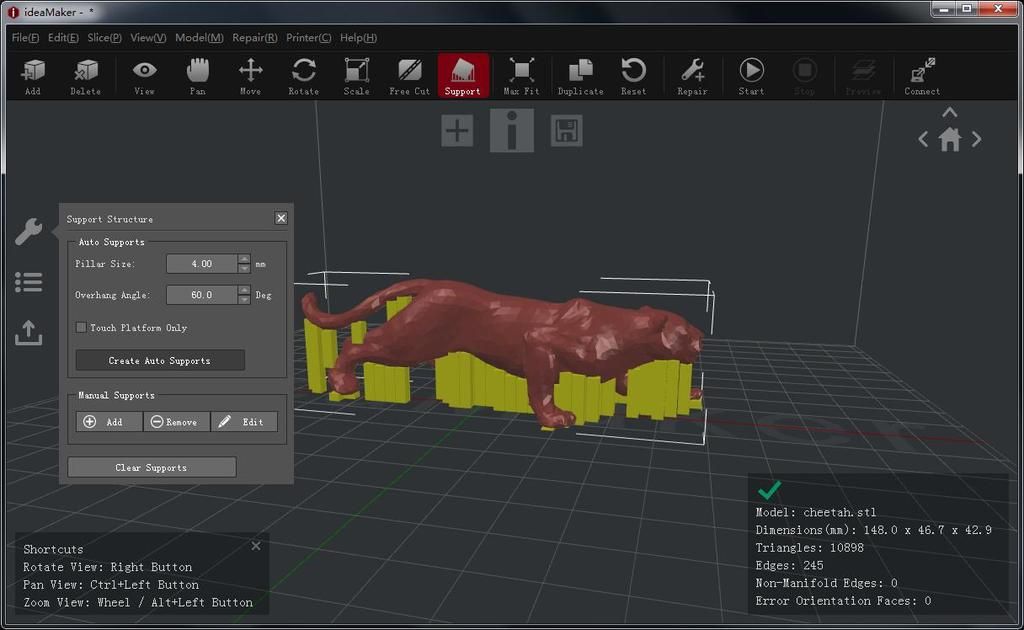 It is open source and has advanced functionality. It provides the user with a huge opportunity to preview the model before sending it to print by showing it from different angles. This software provides models with a unique 3D honeycomb infill that does not repeat like a pattern, but extends only to selected layers. Its use increases the strength of the grown product. Slic3r integrates directly with Octoprint. nine0003
It is open source and has advanced functionality. It provides the user with a huge opportunity to preview the model before sending it to print by showing it from different angles. This software provides models with a unique 3D honeycomb infill that does not repeat like a pattern, but extends only to selected layers. Its use increases the strength of the grown product. Slic3r integrates directly with Octoprint. nine0003
#7: MeshLab
MeshLab is intended for professional use. Its main purpose is to prepare STL files for 3D printing. It has a built-in STL editor for patching holes, removing part of a 3D model, merging several of its parts into one, etc. MeshLab is used to modify 3D models and "repair" them before printing.
#8: OctoPrint
OctoPrint is a software for professionals that does not require a wired connection to a 3D printer. It can be called "host" software, designed to start, pause or stop 3D printing. OctoPrint can be connected to any Wi-Fi enabled device and used for remote control of 3D printing.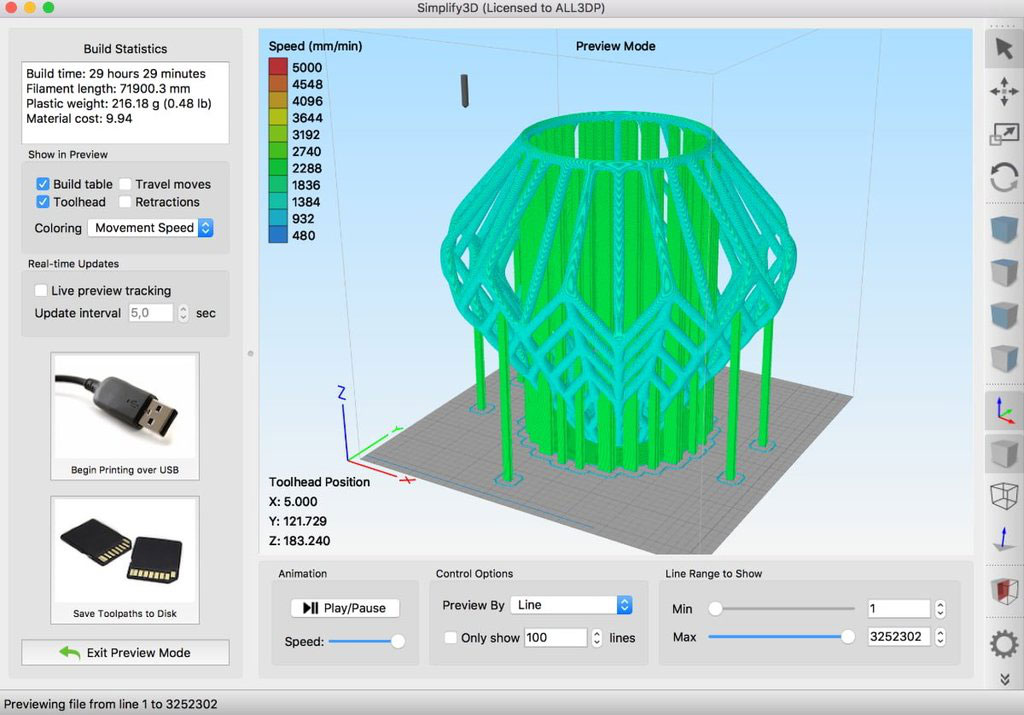 This program is compatible with almost all modern 3D printers. nine0003
This program is compatible with almost all modern 3D printers. nine0003
Top 20 Free 3D Printing & 3D Printing Software
Looking for 3D printing software? We've rounded up the top 20 software tools for beginners and professionals alike. Most slicers are free.
What is a slicer? This is a program for preparing a digital model for printing. Models for 3D printing are usually distributed in STL files. To turn an STL file into G-code (a language that a 3D printer understands), a slicer program is required. It is called a slicer because it cuts (to slice - English) a 3D model into many flat two-dimensional layers, from which a 3D printer will add a physical object. nine0003
Which slicer should I choose? In this article, we will tell you which slicer is the best choice for 3D printing for each stage of your work. Which one is better for preparing a 3D model for printing? But what if you need to create a 3D model from scratch? And if you are only taking the first steps in 3D?
Don't be afraid: we've answered all of these questions, including the required skill level for each program and where you can download it. The great thing is that most of these programs are completely free and open source. nine0003
The great thing is that most of these programs are completely free and open source. nine0003
- Cura
- CraftWare
- 123D Catch
- 3D Slash
- TinkerCAD
- 3DTin
- Sculptris
- ViewSTL
- Netfabb Basic
- Repetier
- FreeCAD
- SketchUp
- 3D Tool
- Meshfix
- Simplify3D
- Slic3r
- Blender
- MeshLab
- Meshmixer
- OctoPrint
#1: Cura
For beginners who need a slicer to prepare STL files for 3D printing
Cura is the default slicer software for all Ultimaker 3D printers, but can be used with most others , including RepRap, Makerbot, Printrbot, Lulzbot and Witbox. The program is completely open source, its capabilities can be extended using plugins.
This program is very easy to use and allows you to manage the most important 3D printing settings through a clear interface.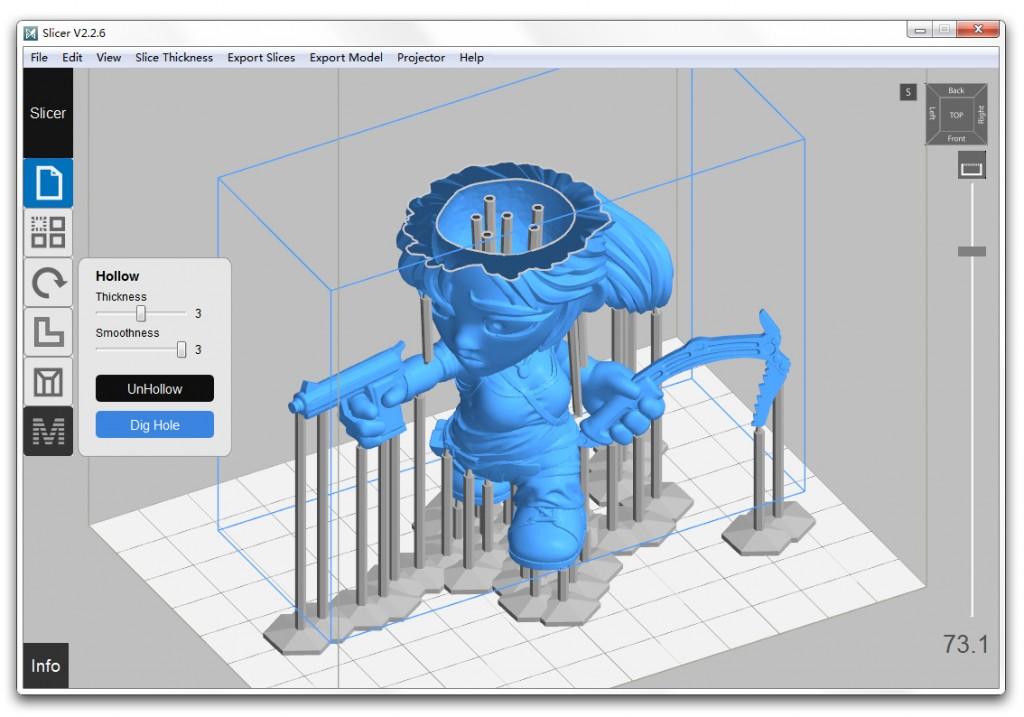 Start in Basic mode to quickly get up to speed and change print quality settings. If finer control is required, switch to Expert mode. nine0003
Start in Basic mode to quickly get up to speed and change print quality settings. If finer control is required, switch to Expert mode. nine0003
Cura can also be used to directly control the printer, but then the printer and computer must be connected to each other.
Download: Cura
Price: Free
Systems: PC, Mac, Linux
#2: CraftWare
For beginners to prepare STL files for 3D printing 3D printers by the Hungarian startup CraftUnique to support their CraftBot crowdfunding machine. However, the program works with other printers. nine0003
Like Cura, CraftWare allows you to switch from "Easy" to "Expert" mode, depending on how confident you feel. It's a colorful application featuring a visual G-code visualization where each function is represented by a different color. But the most outstanding feature is the individual support service. As far as we know, only the paid program Simplify3D has this.
Please note, however, that this program is still in beta, so bugs may occur. nine0003
nine0003
Download: CraftWare
Price: Free
Systems: PC, Mac
#3: 123D Catch
-systems, smartphones and tablets, which allows you to convert images of objects into a 3D model. Pictures can be taken with a smartphone/tablet or digital camera.
You need many photos of the object from different angles - the more the better - after which they will be compiled into a 3D model. nine0003
123D Catch is more of a fun app than a professional 3D printing tool, but after some tambourine dancing, you can get good results, especially when paired with an STL editor like MeshLab or Meshmixer.
Price: Free
Systems: PC, Android, iOS, Windows Phone
#4: 3D Slash
and surprisingly simple, and refreshingly new. With 3D Slash, you can design 3D models using your dice skills. nine0003
You can start with a large block and, like a virtual sculptor, remove small cups from it with tools such as a hammer or drill, or start from empty space and build a model from cubes and other shapes. You can paint with flowers or use template pictures.
You can paint with flowers or use template pictures.
Other features worth mentioning are tools for creating logos and 3D text. The Logo Wizard imports an image and creates a 3D model, while the Text Wizard allows you to enter and format text, and then turn it into 3D. nine0003
Recommended!
Download: 3dslash.net
Price: Free
Systems: PC, Mac, Linux, Browser
#5: TinkerCAD
- A computer-aided design (CAD) system for 3D printing, which is a good starting point for beginners. Since its capabilities are limited compared to Blender, FreeCAD and SketchUp, many users switch to more powerful tools after some time. nine0003
As in 3D Slash, here you can build models from basic shapes. At the same time, unlike 3D Slash, TinkerCAD allows you to create vector shapes in 2D and convert them into three-dimensional models.
Come in: Autodesk TinkerCAD
Price: Free
Systems: Browser
#6: 3DTin
For beginners who want to create 3D models for printing
online is another easy and intuitive tool choice for beginners in 3D modeling. All you need is a Chrome or Firefox browser with WebGL enabled. nine0003
All you need is a Chrome or Firefox browser with WebGL enabled. nine0003
Choose from a huge library of 3D shapes and add them to your sketch. All sketches are stored in the cloud, access to them is free if you honor the Creative Commons license. Everything can be exported to STL or OBJ formats.
Enter: 3DTin
Price: Free
Systems: Browser
#7: Sculptris
clay. This is a fantastic 3D modeling program if figurines are your main task. For example, you can make a bust of your favorite video game or comic book character. Sculptris is completely free and bills itself as a stepping stone to the more complex (and expensive) ZBrush tool. nine0003
Download: Pixologic Sculptris
Price: Free
Systems: PC, Mac
#8: ViewSTL
For beginners who want to view STL files
ViewSTL is the easiest way to view STL files . Simply open a web page and drag the STL onto the dotted box.
The STL online viewer allows you to display the model in one of three views: flat shading (for a quick view), smooth shading (for a high-quality image), and wireframe. nine0003
nine0003
Enter: ViewSTL
Price: Free
Systems: Browser
#9: Netfabb Basic
some nice features that allow you to analyze, "repair" and edit STL files before moving on to the model cutting stage.
A good choice if you need more than just a slicer and want to be able to quickly fix STL files without having to learn programs like MeshLab or Meshmixer. nine0003
Don't let the 'Basic' in the name fool you, Netfabb Basic is actually a very powerful 3D printing tool. It's "basic" only in the sense that it doesn't cost €1,500 like Netfabb Professional!
Download: netfabb.de
Price: Free
Systems: PC, Mac, Linux
No. 10: Repetier
For advanced to prepare STL files for 3D printing
9002 the next level of 3D printer slicer software, but if you want to stay open source, you should look into Repetier. It is the great grandfather of 3D printing software and a favorite of the RepRap community. nine0003
nine0003 Today the program is moving by leaps and bounds from the level for beginners to advanced users. Packaged in an all-in-one configuration, it supports up to 16 extruders, multi-slicing via plug-ins, and virtually every fusing 3D printer on the market. Get ready to tinker!
What's more, Repetier Host works remotely via Repetier Server, so that the 3D printer can be controlled via a browser, tablet or smartphone. nine0003
Download: Repetier
Price: Free
Systems: PC, Mac, Linux
#11: FreeCAD
The program is a great option for developing your design skills. More technically, this parametric 3D modeling program allows you to easily change the project by rolling back through the history of the model and editing the parameters. nine0003
Download: freecadweb.org
Price: Free
Systems: PC, Mac, Linux
#12: SketchUp
For beginners who want to create 3D printable models
SketchUp is the perfect combination of simplicity and - the perfect combination functionality, with a user-friendly interface and a relatively flat learning curve (i.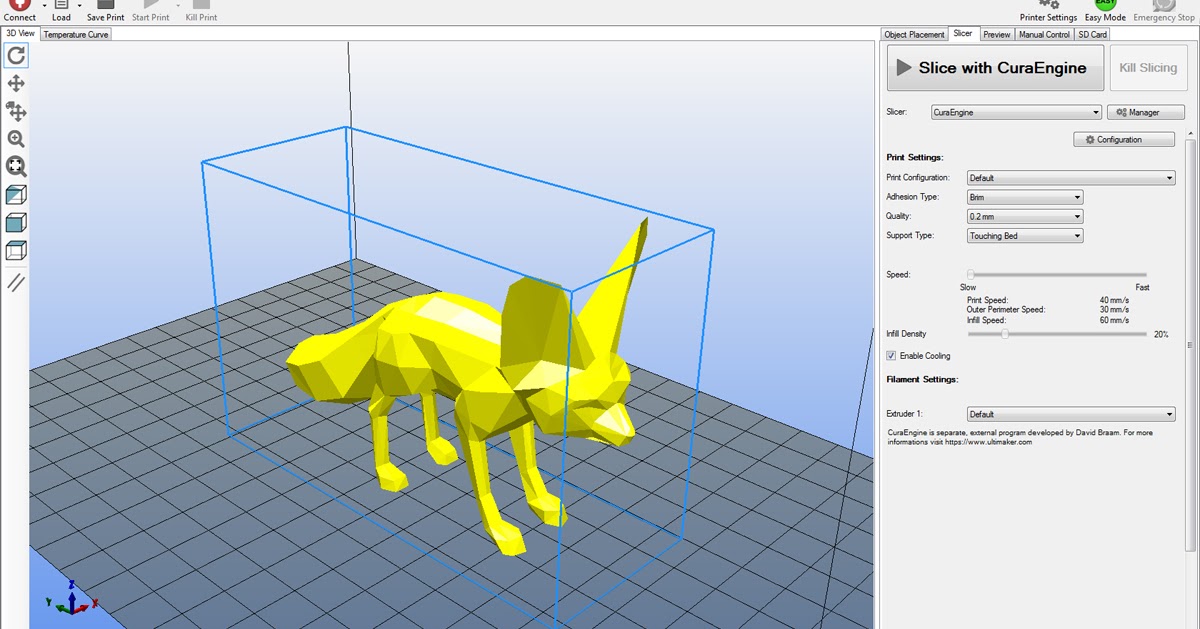 e., as experience grows with the time spent), the ideal program for developing three-dimensional models.
e., as experience grows with the time spent), the ideal program for developing three-dimensional models.
The Make SketchUp version is free and will have everything you need for 3D modeling if you also download and install the free STL exporter. There is also a professional edition for architects, interior designers and engineers. nine0003
Download: sketchup.com
Price: Free (SketchUp Make), $695 (SketchUp Pro)
Systems: PC, Mac, Linux
#13: 3D-Tool Free Viewer
view and check STL files
3D-Tool Free Viewer is a sophisticated tool that, among other things, allows you to check the structural integrity and printability of your file. With the Cross-Section function, for example, you can look at the model from the inside and check the wall thickness. Very useful if you want to check your STL file for killer errors before printing. nine0003
Download: 3D-Tool
Price: Free
Systems: PC
#14: Meshfix
your model for errors.
Price: Free
Systems: Browser
#15: Simplify3D
For professionals to prepare STL files for 3D printing print. A flexible algorithm checks the model for problems, fixes them, shows a preview of the printing process (ideal for identifying potential problems), and then slices it. nine0003
This slicer offers the best infill pattern options in the competition. For models that require supports, Simplify3D will create the appropriate structures on its own and give you full control over their placement. For printers with a dual extruder, when printing with different materials, the Dual Extrusion wizard will help, as a result of which, for example, it will be easier to remove the dissolving filament.
Simplify3D supports 90% of today's commercially available desktop 3D printers and is compatible with Marlin, Sprinter, Repetier, XYZprinting, FlashForge, Sailfish and MakerBot firmware. Simplify3D can also be used to directly control the printer, but then the printer and computer must be connected to each other. nine0003
nine0003
Download: simplify3d.com
Price: $149
Systems: PC, Mac, Linux
#16: Slic3r
source code, which has a reputation as a carrier of super new functionality, which you will not find anywhere else. The current version of the program is able to show the model from multiple angles, so that the user gets a better preview experience.
There's also an incredible 3D honeycomb infill, the first of its kind that can extend over multiple layers rather than repeating itself like a stamp. This significantly increases the strength of the internal filling of the model and the final printout.
Another option is direct integration with Octoprint. Once the files on the user's desktop are sliced, they can be directly uploaded to Octoprint with one click.
Download: Slic3r
Price: Free
Systems: PC, Mac, Linux
#17: Blender
For professionals who want to create 3D printable models
Blender is a popular computer-aided design (CAD) system with a steep learning curve. Not at all the best choice for beginners, but what you need if you are quite experienced and need something more complex for modeling and printing.
Not at all the best choice for beginners, but what you need if you are quite experienced and need something more complex for modeling and printing.
In short, Blender is one of the most powerful tools in existence. Its community is always ready to help, there are a lot of educational materials. It's also open source, so enthusiasts often write extensions to make it even better and more powerful. nine0003
Download: blender.org
Price: Free
Systems: PC, Mac, Linux
#18: MeshLab
For professionals to prepare STL files for 3D printing
MeshLab - advanced editor. It allows you to remove parts of a 3D model, merge two models into one, patch holes. If you need a program to modify models for 3D printing or some kind of "repair" work, MeshLab is the right choice.
Price: Free
Systems: PC, Mac, Linux
#19: Meshmixer
For professionals to prepare STL files for 3D printing files. It's especially good for identifying potential problems and fixing them automatically.



